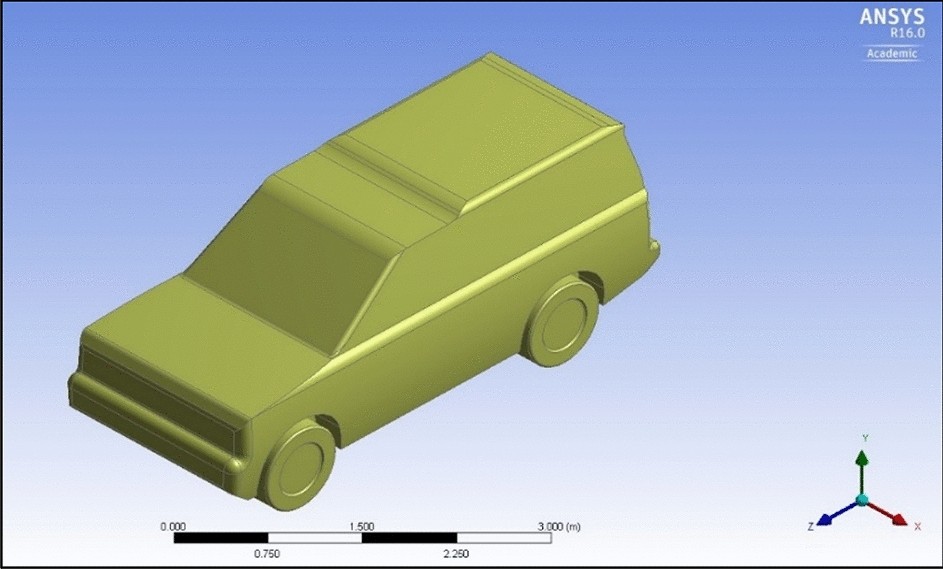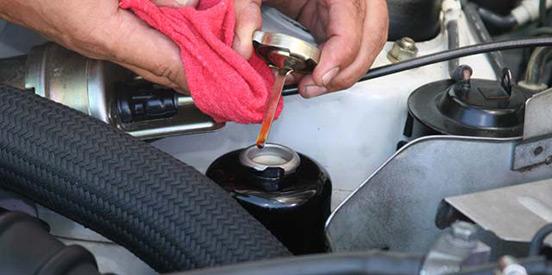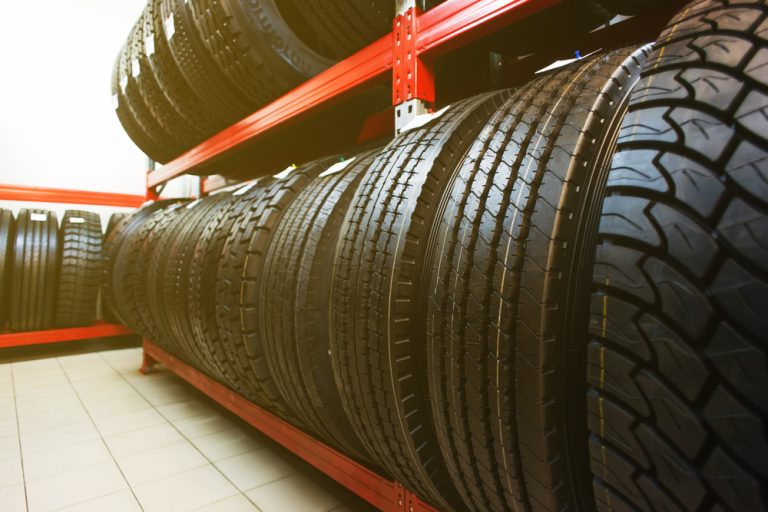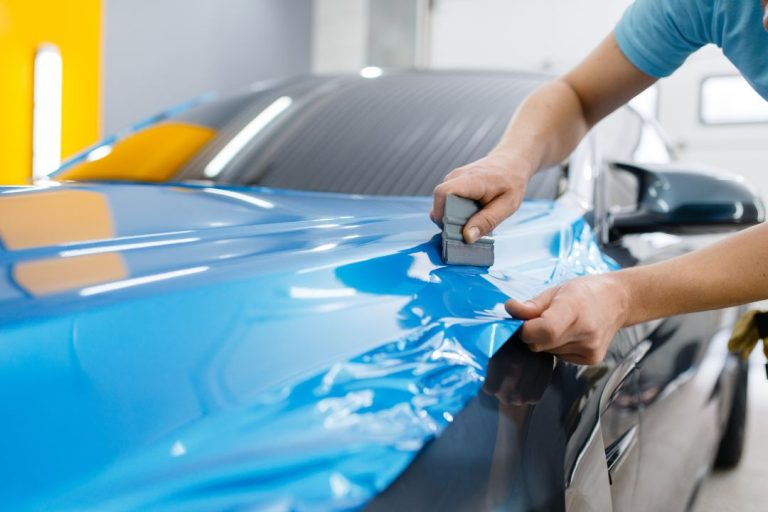Mastering the Fundamentals: Car Aerodynamics Simplified
Car aerodynamics is essential for achieving optimal performance and fuel efficiency. Understanding its basics is crucial to improve the overall performance of a vehicle.
We will explore the fundamental concepts of car aerodynamics, including drag, lift, downforce, and airflow management. By understanding how these factors affect a car’s performance, drivers and automotive enthusiasts can make informed decisions about modifications or design changes to improve aerodynamics and enhance the driving experience.
So, let’s dive into the world of car aerodynamics and gain a deeper understanding of its importance in the automotive industry.
Understanding The Basics
Discover the fundamentals of car aerodynamics and gain a solid understanding of its basics. Dive into the world of airflow, drag, and lift to optimize your vehicle’s performance.
Car aerodynamics plays a crucial role in the performance, efficiency, and even safety of a vehicle. Understanding the basics of car aerodynamics is essential for both car enthusiasts and everyday drivers. In this section, we will explore why car aerodynamics matter, the key factors affecting car aerodynamics, and the role of drag and lift.
Why Car Aerodynamics Matter:
- Improved fuel efficiency: A car with good aerodynamics experiences less air resistance, allowing it to move through the air more easily. This reduces the amount of energy required to propel the vehicle, resulting in better fuel efficiency.
- Enhanced stability: Proper aerodynamic design can help improve a car’s stability by minimizing lift and ensuring better traction on the road. This is particularly important at higher speeds and during cornering.
- Increased performance: By reducing drag and optimizing airflow, car aerodynamics can enhance the overall performance of the vehicle. This includes improved acceleration, higher top speed, and smoother handling.
- Noise reduction: Good aerodynamics can also help reduce wind noise when driving at high speeds, resulting in a quieter and more comfortable ride.
- Safety considerations: A car with poor aerodynamics may experience a lack of stability, making it more challenging to control. Understanding how aerodynamics affect a vehicle can contribute to driving safety.
Key Factors Affecting Car Aerodynamics:
- Shape and design: The overall shape and design of a car greatly influence its aerodynamics. Factors such as the curvature of the body, angle of the windshield, and sloping roofline can either enhance or hinder airflow.
- Frontal area: The size of the frontal area, which includes the front grille and headlights, directly impacts aerodynamics. A smaller frontal area reduces air resistance and drag.
- Underbody design: The underbody of a car plays a vital role in directing airflow. Features like smooth panels, diffusers, and air dams help manage the airflow and reduce turbulence underneath the vehicle.
- Side mirrors and accessories: Accessories such as side mirrors, roof racks, and spoilers can disrupt the smooth flow of air, increasing drag. Proper design and positioning of these elements are crucial for minimizing their aerodynamic impact.
- Wheel design: The design of the wheels can affect aerodynamics. Spokes or patterns that allow for better airflow through the wheels can reduce drag.
The Role Of Drag And Lift:
- Drag: Drag is the resistance encountered by a vehicle as it moves through the air. It is primarily influenced by the shape, size, and surface roughness of the car. Minimizing drag helps improve performance and fuel efficiency.
- Lift: Lift is an upward force generated by airflow around the car. While lift can be desirable for airplanes, excessive lift on a car can reduce traction on the road, compromising stability and handling. Proper aerodynamic design aims to minimize lift and maximize downforce to increase grip.
Understanding the fundamentals of car aerodynamics is crucial for optimizing performance, efficiency, and safety. By considering factors like shape, frontal area, underbody design, and managing drag and lift, manufacturers can design vehicles that offer better fuel efficiency, stability, and overall driving experience.
Streamlining The Exterior
Discover the fundamentals of car aerodynamics to streamline the exterior of your vehicle. Gain insights into optimizing airflow and enhancing performance for an efficient driving experience.
Designing A Sleek And Aerodynamic Body
When it comes to car aerodynamics, the exterior design plays a crucial role in determining how the vehicle interacts with the air. Designing a sleek and aerodynamic body is key to reducing drag, optimizing fuel efficiency, and enhancing overall performance.
Here’s a look at the significance of a low coefficient of drag and different car body shapes that can help achieve optimal aerodynamics:
The Significance Of A Low Coefficient Of Drag (Cd)
- A low coefficient of drag (Cd) is vital for minimizing air resistance and improving a car’s efficiency. It measures how streamlined the vehicle is in cutting through the air.
- Cars with a lower Cd value experience less drag, which means they require less energy to move forward, resulting in improved fuel economy.
- Achieving a low Cd can be accomplished through careful design choices, including smooth surface contours, aerodynamic body lines, and reducing features that create turbulence, such as side mirrors and sharp edges.
Exploring Different Car Body Shapes For Optimal Aerodynamics
To optimize aerodynamics, car manufacturers experiment with various body shapes. Certain designs are better suited to overcoming air resistance and achieving greater efficiency:
- Teardrop shape: Resembling a teardrop, this design is known for its smooth, rounded front that tapers towards the rear. It minimizes drag by gently parting the air, reducing turbulence and creating a streamlined flow along the car’s body.
- Slope-back design: Cars with a sloping rear end, like a hatchback or a fastback, have a distinct advantage. The angled back reduces turbulence and redirects wind efficiently, resulting in better airflow separation and reduced drag.
- Sporty sedan design: Sedans that have a slightly lowered suspension, ground-hugging features, and sleek body lines effectively reduce air resistance. These aerodynamic enhancements contribute to better handling and improved fuel efficiency.
- Air dams and spoilers: Front air dams and rear spoilers are essential in manipulating airflow. Air dams redirect incoming air, reducing its interference with the underbody, while spoilers enhance downforce and control airflow separation.
- Streamlined side mirrors: Sculpted side mirrors minimize resistance by decreasing turbulence caused by airflow hitting the mirrors. These streamlined designs reduce drag while maintaining functionality.
Understanding the basics of car aerodynamics is crucial for developing vehicles that are not only visually appealing but also highly efficient. By focusing on streamlining the exterior through design choices and body shape, as well as minimizing drag through a low coefficient of drag (Cd), car manufacturers can optimize aerodynamics and enhance overall performance.
Controlling Airflow
Discover the fundamentals of car aerodynamics by grasping the concept of controlling airflow, an important aspect that affects vehicle performance and fuel efficiency. Gain insights into how understanding and managing airflow can enhance your driving experience.
The Role Of Spoilers And Wings:
Spoilers and wings play a crucial role in controlling the airflow over a car, particularly at high speeds. They are designed to create downforce, which helps to improve stability and traction. Here are some key points to understand about the role of spoilers and wings:
- Spoilers: These are typically found on the rear of the car and are designed to disrupt the airflow and reduce lift. They work by creating turbulence, which helps to redirect the air around the car. This reduces the air pressure on top of the car, increasing the downforce and improving traction. Spoilers have a noticeable impact on the car’s handling and can be especially beneficial in racing or high-performance vehicles.
- Wings: Unlike spoilers, wings are designed to generate both downforce and lift. They work by separating the airflow above and below the wing, creating a pressure difference that generates downforce. Wings can be found on the front or rear of the car, depending on the desired aerodynamic effect. In racing cars, wings are often adjustable, allowing drivers to fine-tune the car’s aerodynamics based on track conditions.
How Diffusers Enhance Car Aerodynamics:
Diffusers are an essential component in optimizing car aerodynamics. They are usually located at the rear of the car, underneath the bumper. Here’s what you need to know about how diffusers enhance aerodynamics:
- Diffuser design: Diffusers are designed to increase the speed of the airflow underneath the car, helping to reduce air pressure and improve downforce. They typically feature a series of fins or channels that gradually expand as they extend towards the back of the car. This expansion creates a low-pressure area, effectively sucking the car onto the road and enhancing stability.
- Managing airflow: By channeling the airflow efficiently, diffusers minimize turbulence and reduce drag. This helps the car to cut through the air more smoothly, enhancing overall performance. Diffusers are particularly effective at high speeds, where drag becomes a significant factor. They aid in reducing lift and maintaining control, especially during cornering or braking.
Utilizing Air Dams And Splitters For Improved Performance:
Air dams and splitters are often used in performance vehicles to optimize aerodynamics and enhance performance. Here’s how they contribute to improved performance:
- Air dams: Air dams are typically located at the front of the car, beneath the bumper. They are designed to redirect and channel airflow around and under the car. By creating a low-pressure area, air dams help to reduce lift and improve stability. They also help to cool the brakes by directing cool air towards them, preventing overheating during intense driving conditions.
- Splitters: Splitters are located on the front bumper, below the air dam. They are flat and extend forward from the bumper, creating a small spoiler-like effect. Splitters help to direct airflow away from the bottom of the car, reducing drag and improving downforce. By managing the air effectively, splitters enhance traction and stability, allowing for better control during high-speed maneuvers.
The use of spoilers, wings, diffusers, air dams, and splitters all play a crucial role in controlling airflow and enhancing car aerodynamics. Each component has a specific purpose, contributing to improved stability, downforce, and overall performance.
Understanding Airflow Patterns
Understanding the airflow patterns is crucial in comprehending the basics of car aerodynamics. By studying the movement of air around a vehicle, one can optimize its design for improved speed, stability, and fuel efficiency.
Car aerodynamics plays a crucial role in determining a vehicle’s performance and fuel efficiency. By understanding the airflow patterns that occur around a car, engineers can optimize the design to minimize drag and improve stability. In this section, we will explore the concept of laminar and turbulent airflow, discuss the importance of boundary layers, and analyze the flow around different parts of a car.
The Concept Of Laminar And Turbulent Airflow:
- Laminar airflow refers to a smooth and streamlined flow of air, where the air particles move in parallel layers with minimal disruption.
- Turbulent airflow, on the other hand, is characterized by irregular and chaotic movement, with air particles swirling and creating eddies.
The Importance Of Boundary Layers:
- Boundary layers are thin layers of air that form on the surface of a car as air flows over it. These layers help reduce the drag force acting on the vehicle.
- The two types of boundary layers are the laminar boundary layer and the turbulent boundary layer.
- The laminar boundary layer occurs when air flows smoothly over the surface, while the turbulent boundary layer is created when the airflow becomes disrupted and chaotic.
- Maintaining a thin and stable boundary layer is crucial for optimizing aerodynamics and reducing drag.
Analyzing The Flow Around Different Parts Of A Car:
- The front of the car, including the grille and bumper, has a significant impact on the airflow. It helps direct the air over and around the vehicle, reducing drag and creating downforce for improved stability.
- The roof and rear section of the car also affect the airflow. A smooth and streamlined shape encourages laminar airflow, while any irregularities can cause turbulence and increase drag.
- The underbody of a car is another important consideration. By incorporating aerodynamic panels and diffusers, engineers can manage the airflow to reduce drag and enhance overall performance.
- Wheels and tires can create turbulence, so designing aerodynamic wheel covers can help minimize this effect.
- Side mirrors and other external components can disrupt the airflow, causing drag. Optimizing their design can contribute to improved aerodynamics.
Understanding the airflow patterns around a car is crucial for optimizing its aerodynamics. By considering laminar and turbulent airflow, boundary layers, and analyzing the flow around different parts of the vehicle, engineers can design cars that offer better performance, fuel efficiency, and stability.
So, the next time you drive, remember that every curve and detail on your vehicle is thoughtfully designed to enhance aerodynamic performance.
Improving Aerodynamics With Underbody Design
Improving car aerodynamics is crucial for optimizing performance. Understanding the basics of car aerodynamics, especially underbody design, can enhance the vehicle’s efficiency and reduce drag, resulting in better fuel economy and improved handling.
The design of a car’s underbody plays a crucial role in enhancing its aerodynamics. By optimizing the airflow underneath a vehicle, manufacturers can achieve improved performance, fuel efficiency, and stability. Let’s delve into the various aspects of underbody design that contribute to overall aerodynamic enhancement.
Exploring The Benefits Of Flat Underbody Panels
Flat underbody panels have become an integral part of modern car design, offering numerous benefits in terms of aerodynamics. Here are some key advantages of incorporating flat underbody panels:
- Streamlined airflow: By providing a smooth surface on the underbody, these panels help reduce turbulence and minimize air drag, allowing the vehicle to glide through the air more efficiently.
- Reduced lift: Flat underbody panels work in conjunction with the car’s body contours to regulate the generation of lift forces. By managing the airflow underneath, they help counteract lift and maintain better stability at high speeds.
- Enhanced fuel efficiency: The improved aerodynamic efficiency achieved through flat underbody panels leads to reduced air resistance, which in turn improves fuel economy. This can result in significant savings over the long run.
The Impact Of Rear Diffusers On Downforce
Rear diffusers are another important component of underbody design that directly affects a car’s aerodynamics, particularly in terms of generating downforce. Here’s how they contribute to improved performance:
- Downforce generation: Rear diffusers work by increasing the velocity of the airflow passing underneath the car, creating an area of low pressure. This difference in pressure creates downforce, which maximizes tire grip and enhances stability, especially during high-speed maneuvers.
- Reducing drag: In addition to generating downforce, rear diffusers also aid in minimizing drag. The controlled airflow created by the diffuser reduces the pressure differential between the top and bottom of the car, resulting in less air resistance and increased overall efficiency.
- Improved traction: The increased downforce generated by the rear diffuser enhances the contact between the tires and the road surface. This increased traction allows for better acceleration, cornering, and overall control, particularly in performance-oriented vehicles.
Enhancing Car Stability With Effective Underbody Aerodynamics
Effectively designing the underbody aerodynamics of a car can greatly enhance its stability, especially at higher speeds. Some ways in which underbody aerodynamics contribute to stability are:
- Managing airflow: By optimizing the flow of air beneath the vehicle, underbody design helps to create consistent and predictable forces that counteract lift and maintain stability.
- Reducing turbulence: Introducing features like flat underbody panels and diffusers, along with proper shaping of other components, helps to minimize turbulence caused by the interaction between the car and the surrounding air. This reduces the likelihood of sudden body movements and ensures a smoother and more controlled driving experience.
- Balancing forces: Underbody designs that promote balanced airflow and generate downforce help distribute forces evenly across the car’s body, preventing any excessive weight transfer or instability that could compromise handling.
Remember, by focusing on these aspects of underbody design, manufacturers can unlock the full potential of their vehicles, improving performance, fuel efficiency, and stability. So, the next time you marvel at a sleek sports car gliding effortlessly on the road, you’ll know that well-executed underbody aerodynamics are at play.
Utilizing Aerodynamic Add-Ons
Explore the world of car aerodynamics by understanding the basics and how to utilize aerodynamic add-ons effectively. Enhance your vehicle’s performance with these practical tips.
Car aerodynamics play a crucial role in achieving optimal performance and fuel efficiency. By making use of aerodynamic add-ons, you can further enhance the aerodynamics of your vehicle. Here, we delve into the benefits of side skirts and air curtains, the role of rear spoilers and winglets, and how canards and vortex generators help maximize airflow.
The Benefits Of Side Skirts And Air Curtains:
- Side skirts have become a popular addition to many vehicles due to their significant aerodynamic benefits. They are installed along the bottom sides of the car and work by reducing the air pressure and turbulence that occurs underneath. This helps to improve stability and enhance the overall aerodynamic efficiency of the vehicle.
- Air curtains are another aerodynamic add-on that effectively reduces drag. Positioned on the front corners of the vehicle’s bumper, they work by redirecting the airflow around the vehicle’s wheels. This helps to reduce turbulence and drag, resulting in improved fuel efficiency and better handling.
The Role Of Rear Spoilers And Winglets:
- Rear spoilers are commonly seen on sports cars and high-performance vehicles. They are designed to disrupt and control the flow of air over the rear of the car. By creating downward force, or negative lift, they increase traction and stability at higher speeds. The result is improved handling and reduced lift, allowing the tires to maintain better contact with the road.
- Winglets, on the other hand, are smaller aerodynamic appendages typically attached to the rear wing or spoiler. They work by redirecting airflow and reducing drag, resulting in improved overall aerodynamic efficiency. Winglets are often found on race cars and high-performance vehicles, where every bit of aerodynamic advantage counts.
Maximizing Airflow With Canards And Vortex Generators:
- Canards, also known as dive planes, are small wing-like components installed on the front of a car. They generate downforce and redirect the airflow around the vehicle, effectively reducing lift and improving stability. Additionally, canards help to direct air toward the car’s radiators, aiding in cooling.
- Vortex generators are small, fin-like structures that are strategically placed on the vehicle’s roof, rear, or other aerodynamically relevant surfaces. They work by creating tiny vortices of swirling air that help to improve airflow separation. This results in reduced drag and enhanced stability, particularly at higher speeds.
By utilizing these aerodynamic add-ons, you can enhance the performance, stability, and efficiency of your car. Whether you opt for side skirts and air curtains, rear spoilers and winglets, or canards and vortex generators, each component plays a crucial role in optimizing the aerodynamics of your vehicle.
So, go ahead and explore these options to make the most out of your car’s aerodynamic potential.
Exploring Active Aerodynamics
Explore the fundamentals of car aerodynamics with a focus on active aerodynamics. Learn how these systems optimize vehicle performance through dynamic control of airflow.
Are you fascinated by the intricate design of modern cars and how they cut through the air with ease? The concept of car aerodynamics is a crucial aspect of performance and fuel efficiency. In this section, we will delve deeper into the world of active aerodynamics, which takes car design to a whole new level.
Let’s explore this exciting technology that enhances both dynamic performance and efficiency.
Introduction To Active Aerodynamic Systems:
- Active aerodynamic systems are cutting-edge technologies that dynamically adjust a car’s aerodynamics to optimize its performance and efficiency.
- These systems use various mechanisms, such as adjustable spoilers and wings, to modify the airflow around the car according to different driving conditions.
- Active aerodynamics can improve stability, reduce drag, and even enhance a car’s cornering abilities.
- These systems are typically controlled by sophisticated onboard computers that analyze sensor data and make real-time adjustments.
Adjustable Spoilers And Wings For Dynamic Performance:
- Adjustable spoilers are one of the essential components of active aerodynamics. They can be raised or lowered to control the amount of downforce on the car.
- Higher downforce increases traction, improves stability, and enhances cornering capabilities, especially at high speeds.
- Conversely, lowering the spoiler reduces downforce, reducing drag and improving fuel efficiency.
- Adjustable wings are also utilized in active aerodynamic systems. They can change their angle of attack to optimize the airflow over the car at different speeds.
- By adjusting the wings, the car can maintain a balanced airflow, reducing drag and improving overall performance.
The Future Of Active Aerodynamics In The Automotive Industry:
- Active aerodynamics is already making significant contributions to the automotive industry, but its full potential is yet to be realized.
- As carmakers continue to push the boundaries of innovation, we can expect to see even more advanced and sophisticated active aerodynamic systems in the future.
- By integrating artificial intelligence and sensor technologies, cars will be able to adapt their aerodynamics to the surrounding conditions in real-time.
- This innovation will not only improve performance and efficiency but also enhance safety by ensuring optimal stability and control.
- Active aerodynamics will play a crucial role in the ongoing pursuit of eco-friendly vehicles, as reducing drag and improving efficiency will be paramount in the coming years.
Active aerodynamics represents the pinnacle of modern car design. By incorporating adjustable spoilers, wings, and other advanced technologies, carmakers are creating vehicles that are not only faster and more agile but also more fuel-efficient. The future looks incredibly promising, with further advancements on the horizon.
So, buckle up and get ready to experience the exciting world of active aerodynamics.
The Balance Between Aerodynamics And Ground Clearance
Car aerodynamics and ground clearance are essential aspects of vehicle design. Understanding the balance between these two factors is crucial for optimizing performance and efficiency on the road. Improve your knowledge of car aerodynamics and learn how it influences ground clearance for a smoother driving experience.
Car aerodynamics play a crucial role in optimizing performance and efficiency. One of the challenges faced in vehicle design is finding the right balance between aerodynamics and ground clearance. With increased ground clearance, maintaining aerodynamic qualities becomes more difficult. In this section, we will address these challenges and explore innovative solutions that enable cars to maintain performance and efficiency while offering higher ground clearance.
Addressing The Challenges Faced In Maintaining Aerodynamics With Increased Ground Clearance:
- Increased ground clearance can disrupt smooth airflow, leading to higher aerodynamic drag and reduced fuel efficiency.
- The gap between the underbody of the car and the ground can create turbulence, resulting in instability and decreased handling.
- The design of the car, including the shape of the body, front grill, and wheel arches, must be carefully considered to minimize the negative impact on aerodynamics.
Innovative Solutions For Maintaining Performance And Efficiency:
- The addition of aerodynamic deflectors and panels underneath the car helps direct airflow and reduce turbulence. This enhances stability and improves fuel efficiency.
- Some car manufacturers use active suspension systems that can adjust the ride height according to the driving conditions. This allows for a lower ride height at high speeds, improving aerodynamics, and a higher ride height for better ground clearance during off-road or rough terrain situations.
- The integration of advanced computer simulations and wind tunnel testing enables car designers to refine the shape and contours of the vehicle for optimal aerodynamic performance, even with increased ground clearance.
- By using lightweight materials for construction, car manufacturers can reduce overall weight. This not only improves fuel efficiency but also allows for a higher ground clearance without compromising aerodynamics.
Finding the balance between aerodynamics and ground clearance is crucial for maximizing performance and efficiency in cars. Innovative solutions, such as aerodynamic deflectors, active suspension systems, computer simulations, and lightweight materials, help maintain the desired aerodynamic qualities even with increased ground clearance.
By implementing these solutions, car designers can provide vehicles that offer both versatility and optimal performance on various terrains.
The Role Of Computational Fluid Dynamics (Cfd) In Car Design
Computational Fluid Dynamics (CFD) plays a crucial role in car design, particularly in understanding the basics of car aerodynamics. This technology enables engineers to simulate and analyze airflow around the vehicle, optimizing its performance and fuel efficiency.
Understanding The Basics Of Car Aerodynamics
Aerodynamics plays a crucial role in the performance and efficiency of a car. By manipulating airflow around the vehicle, engineers can optimize various aspects such as stability, fuel economy, and overall performance. One of the key tools used in this process is Computational Fluid Dynamics (CFD).
In this section, we will delve into how CFD simulations help optimize car aerodynamics, explore their real-world applications and benefits in automotive engineering, and analyze some compelling case studies showcasing the effectiveness of CFD in improving car performance.
How Cfd Simulations Help Optimize Car Aerodynamics:
- Understanding fluid flow: CFD simulations enable engineers to analyze and comprehend the complex movement of air around a car. By simulating the flow patterns, they gain insights into how aerodynamic forces affect the vehicle’s performance.
- Virtual testing: CFD allows engineers to virtually test multiple design iterations before fabricating physical prototypes. This saves time, money, and resources by minimizing the need for physical wind tunnel testing.
- Optimizing aerodynamic features: Through CFD simulations, engineers can optimize various aerodynamic features such as the shape of the car, the angle of spoilers, and the positioning of air vents. This fine-tuning process helps in reducing drag, enhancing downforce, and improving overall aerodynamic efficiency.
Real-World Applications And Benefits Of Cfd In Automotive Engineering:
- Vehicle design: CFD is extensively used during the design and development phase of a car. It helps engineers predict the aerodynamic performance of different design concepts and assists in making informed decisions about the final design.
- Improving fuel efficiency: By reducing drag and enhancing the aerodynamic properties of a car, CFD simulations contribute to improved fuel efficiency. This not only benefits the environment but also lowers operating costs for vehicle owners.
- Enhancing stability and handling: CFD aids in optimizing aerodynamic stability and improving the handling characteristics of a car. By minimizing wind-induced forces and controlling airflow around the vehicle, engineers can create a more stable and comfortable driving experience.
Case Studies Showcasing The Effectiveness Of Cfd In Improving Car Performance:
- Mercedes-AMG GT4: CFD analysis played a crucial role in optimizing the aerodynamics of the Mercedes-AMG GT4 race car. Simulations helped engineers refine the design of the front splitter, diffuser, and rear wing, resulting in improved downforce and reduced drag, ultimately enhancing the car’s lap times on the track.
- Toyota Prius: The Toyota Prius, known for its exemplary fuel efficiency, owes much of its success to CFD simulations. Engineers utilized CFD to refine the car’s shape, reducing drag and enhancing its aerodynamic performance. This resulted in improved fuel economy and reduced emissions.
- Ford GT: The iconic Ford GT supercar underwent extensive CFD analysis during its development. Engineers carried out simulations to optimize the airflow around the car, fine-tuning features like the active rear wing and air ducts. This meticulous aerodynamic refinement contributed to the car’s exceptional speed and stability.
CFD simulations have revolutionized the field of automotive engineering by enabling engineers to optimize car aerodynamics in a virtual environment. With their ability to predict and refine airflow patterns, CFD tools have become indispensable in creating more fuel-efficient, stable, and high-performing vehicles.
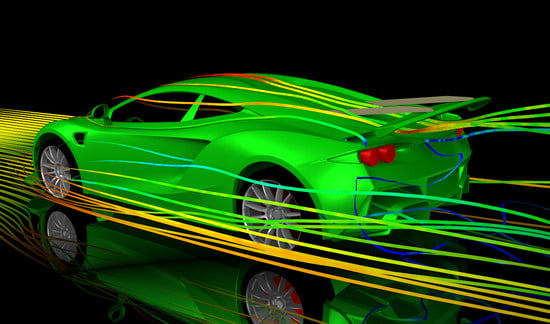
Credit: www.mdpi.com
Frequently Asked Questions Of Understanding The Basics Of Car Aerodynamics
What Are The Basics Of Aerodynamics In Cars?
Aerodynamics in cars refers to the study of how air flows around a vehicle. It helps reduce drag, improve fuel efficiency and enhance stability.
How Do You Explain Aerodynamics To A Child?
Aerodynamics is how things move through air. It explains why objects can fly or go fast.
At What Speed Does Aerodynamics Matter On A Car?
Aerodynamics on a car matter at high speeds to reduce drag and enhance fuel efficiency.
How Can I Improve My Car Aerodynamics?
To improve your car aerodynamics, try these tips: 1. Add a front spoiler and rear wing to increase downforce. 2. Install side skirts to reduce air turbulence along the car’s sides. 3. Lower the car’s suspension to reduce air drag from underneath.
4. Opt for aerodynamic wheels and tires to minimize air resistance.
Conclusion
Understanding the basics of car aerodynamics is crucial in optimizing the performance and efficiency of your vehicle. By implementing aerodynamic principles, you can significantly reduce drag and improve fuel economy. Utilizing features like smooth body contours, subtle spoilers, and aerodynamic wheel designs can make a noticeable difference in your car’s performance.
Moreover, considering factors such as air resistance and airflow patterns can enhance stability and handling, ensuring a safer driving experience. As technology advances, car manufacturers are continually refining their designs to maximize aerodynamic efficiency. So, whether you are a car enthusiast looking to enhance your vehicle’s performance or a regular driver aiming to save on fuel costs, understanding car aerodynamics is advantageous.
By grasping the fundamentals of how air behaves and interacts with your car, you can make informed decisions when it comes to modifications or purchasing a new vehicle. So, start exploring the fascinating world of car aerodynamics and unlock the full potential of your car.

